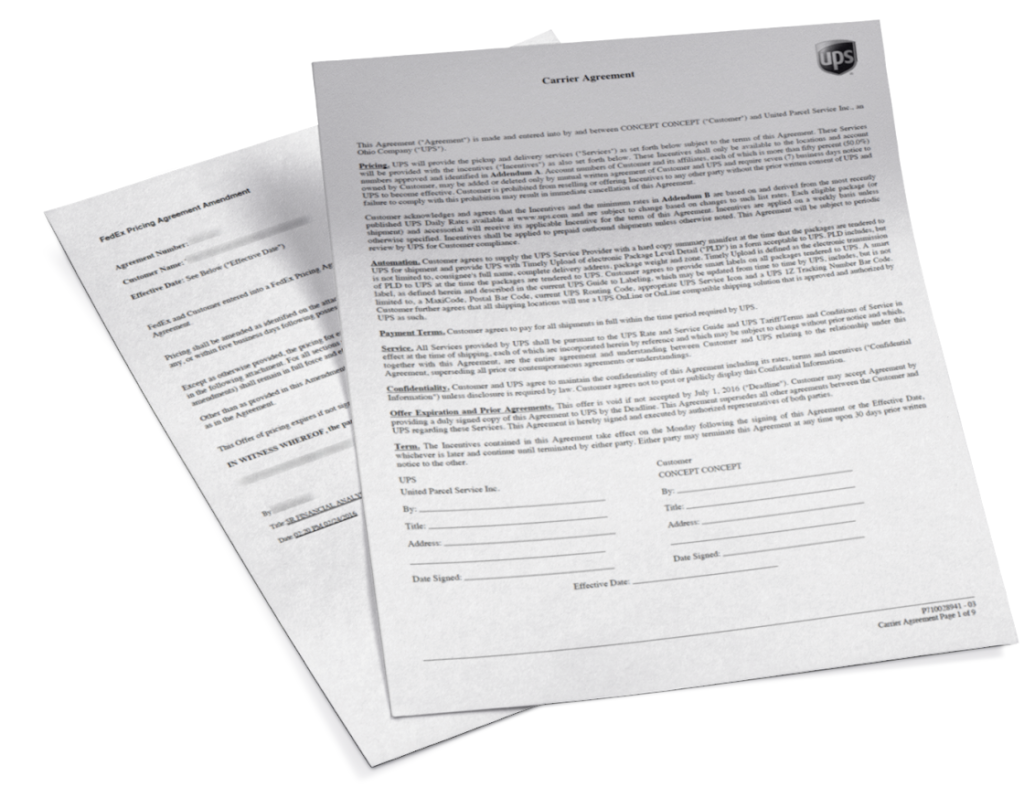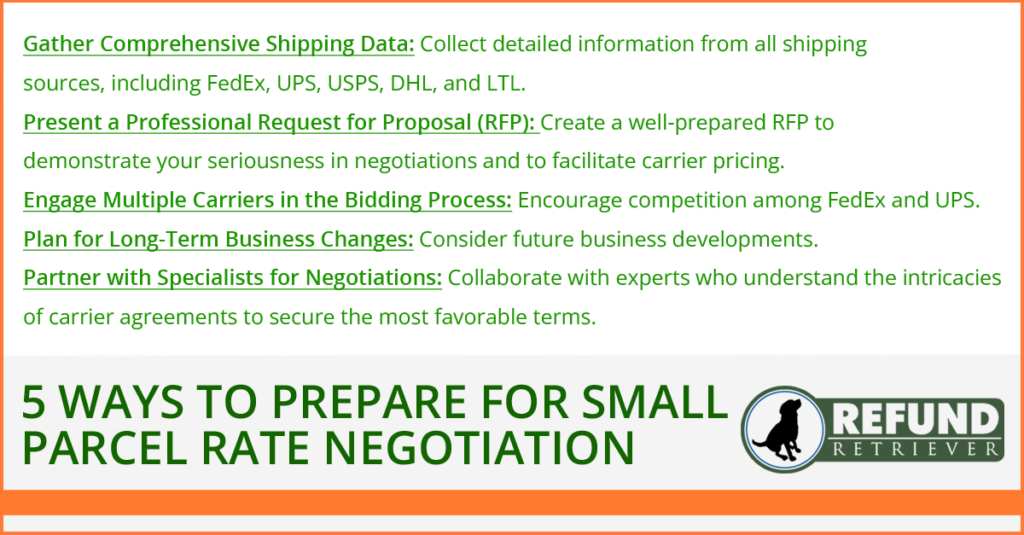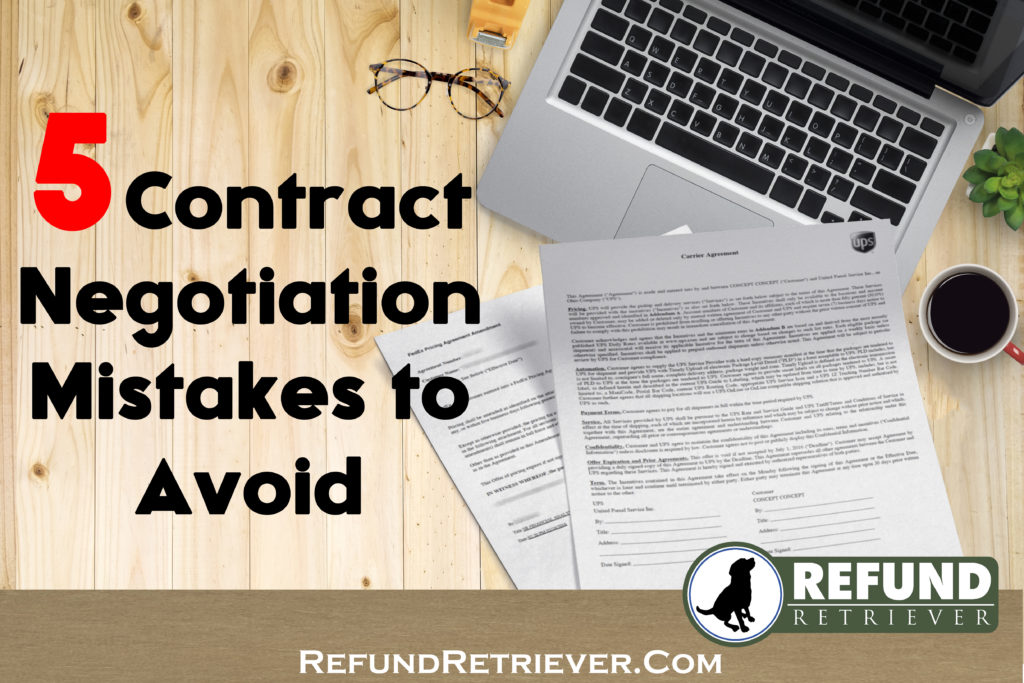
A successful FedEx or UPS parcel rate negotiation is essential to substantially lower shipping costs. Preparation is critical to how well a company can negotiate lower small parcel rate agreements. Therefore, let us look at a few key points that all businesses, big and small, need to follow.
1. Get all shipping data
Include all FedEx, UPS, USPS, DHL, LTL, or any other sources of shipping costs. The more encompassing information and data you can provide about shipping history, the better. This is where having a partner like Refund Retriever will benefit you greatly in a parcel rate negotiation. All of our late-delivery audit customers have access to reports and analytics. Technology has made shipping data more accessible than ever.
Key Metrics to Review:
- Total annual shipping spend (FedEx & UPS)
- Package volume & weight distribution
- Service level usage (Ground, 2-Day, Overnight, etc.)
- Common shipping zones & destinations
- Additional fees & surcharges paid
In summary, when you present generalizations about shipping patterns, volumes, or accessorial fees, it forces the carrier to do the same with the proposed pricing. And when carriers have to do this, they assume the worst. When you lack accurate data, carriers automatically default to offering you a higher rate. This is simply because they have no idea what to expect.

2. Present your case professionally
A request for proposal (RFP) is a document that provides details about a project and solicits bids from the carriers who will help complete the project. A well-prepared RFP confirms you are serious about the parcel rate negotiation. In addition, this will let the carriers know you’ll be able to assess their pricing thoroughly.
Part of the carriers’ tactics is making it challenging to assess discount rates and quantify their pricing. However, having a method to gather and analyze the proposals from each carrier keeps you in control.
3. Include all carriers in the competition
They are competing for your business; remember that point. FedEx and UPS are both large companies, so it can be a mistake to assume you cannot use both for all types of service levels. Use each carrier’s proposal as leverage points. Every part of an agreement is negotiable, from the grace incentive discount periods to pricing or definitions of accessorial fees.
How to Use This Strategy:
- Obtain proposals from both carriers and compare.
- If one carrier offers a better discount, use it as leverage.
- Consider regional carriers (like OnTrac or LSO) to fill service gaps.
4. Think Long Term
Identifying your current transportation patterns is essential, but it also conveys how your business will change in the next year. Many companies add product lines or open new distribution hubs. If this is the case, it should be planned for in the new carrier agreement. Adding new products can change weights, packaging dimensions, and other fundamental volume data.
- Step 1: Know your shipping data inside out.
- Step 2: Compare your rates to industry standards.
- Step 3: Negotiate more than just base discounts.
- Step 4: Leverage multiple carrier proposals.
- Step 5: Time your negotiation strategically.
Even small changes can directly impact your bottom line. Be sure these forecasted changes are reflected in your new parcel rate negotiations. Get the best pricing for where your business is going, not where it’s been.
5. Find a partner for parcel rate negotiation
Small parcel rate negotiations are often better left to the specialists. A specialist could include an expert at your company or a third party who knows the ins and outs of FedEx and UPS agreements. Carriers are experts at understanding their costs and potential profits, but so is a company like Refund Retriever. The proper knowledge allows shippers to know what discounts or terms are obtainable.
Proper preparation makes all the difference when negotiating small parcel agreements. Taking the time to plan correctly will guarantee your company secures the best possible FedEx or UPS rates. But remember, FedEx and UPS have a team of expert data analysts operating behind the scenes to find potential profit centers. Therefore, it is worth considering the assistance of a company like Refund Retriever. We can advise you on your rates and ensure savings before signing a FedEx or UPS agreement. Contact us to learn how.

